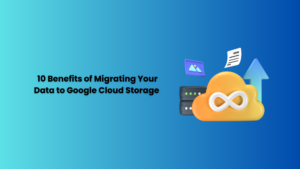Cloud computing – What is it? This article will instruct you on all you need to know concerning clouds. So read on!
Cloud computing is a technology that permits companies to store, analyse and manage data on a shared server. This technology is available from various cloud providers and will enable companies to choose what they need. Some of the most common technologies cover virtual private networks, load balancing and auto-scaling. In addition to storing and analysing data, cloud providers can also provide security and disaster recovery applications.
Cloud computing provides an infrastructure for businesses to store and access data from anywhere, at any time. It eliminates the need to buy multiple CDs and external hard drives and allows users to access corporate data through mobile devices. It even supports automatic updates to prevent bugs and ensure that users get the latest software version. And while these features are helpful for any business, some people may still be apprehensive about cloud computing and would prefer to learn more about it.
Also read:- Cloud Computing In the Modern Day Businesses
The advantages of cloud computing can be felt across many industries. The most significant advantage is that cloud-based software is easy to use. Since a third party provides the services, it’s easy for employees to access the information they need, no matter where they are. In addition, companies don’t have to buy expensive servers or upgrade software. It’s possible to make space in the budget for cloud services instead of asking the CFO for more funds.
Available Cloud-Computing Services With Examples
The most common application of cloud computing is in higher education. Microsoft and Google both provide free cloud services to educational institutions. Several universities and colleges use these services to cut costs and improve efficiency.
- One of the most used examples is Google App Education, which allows students to have a personal workspace. It is also a popular choice for video conferencing because it records meetings in the cloud so that participants can access them from any location.
- Another example is Microsoft Teams, a platform used for communication between colleagues.
- IaaS: This service model provides fundamental infrastructure, such as virtual servers, networks, operating systems and data storage drives. The advantage of this approach is flexibility and the lack of need for hardware and software in your office. It is perfect for small and medium-sized businesses. Both private and public versions are available, so you can choose which one fits your needs. If you’re hesitant about whether you need the public or personal performance, read the terms and conditions carefully before signing up.
- Another popular application for cloud computing is SaaS. Saas in Cloud Computing involves the deployment of software over the Internet. Instead of owning and maintaining a computer infrastructure, users pay for the service on a subscription or pay-per-use basis. This type of service is ideal for short-term projects and can save the company money. The same goes for databases and applications. Many cloud providers will offer these services for free, so they are an excellent option.
Core Elements Of Cloud Computing
The foundation of cloud computing is the technology that enables the system to function. The fundamentals of cloud computing include a virtualised IT infrastructure, which separates data centre resources without physical boundaries.
Using a cloud provider’s infrastructure allows them to maximise the efficiency of the data centre. This model is becoming more popular for businesses and corporations because it provides significant cost savings than end-users on-premises IT infrastructure, scalability and self-service.
As the name suggests, cloud computing refers to the technology that makes it possible to provide services on the cloud.
- This includes virtualised IT infrastructure and abstracting IT infrastructure from physical hardware boundaries.
- This enables cloud providers to maximise the use of data centre resources.
- Many corporations have moved from on-premises IT infrastructure to the cloud delivery model because of the cost savings, increased self-service and agility.
- SaaS is a logical endpoint of the cloud. It provides feedback to IaaS and PaaS. structA SaaS application is software or a program delivered over the Internet and can be used by a particular user for a specific purpose.
- SaaS applications include Salesforce.com, Google Drive, Candy Crush and Eloqua.
- In addition to being a superior layer of cloud computing, a SaaS program can be accessed via a web-based application.
Multi-Cloud Computing And Its Benefits
While multi-cloud computing is becoming more popular and commonplace, there are still many advantages to adopting a single cloud. In many cases, this is simply due to cost and complexity.
However, if you are considering implementing cloud technology for your organisation, here are a few reasons to adopt multiple clouds:
- Flexible – It provides high-level security, is cost-effective, and gives you greater flexibility. In addition, multi-clouds increase business efficiency and uptime.
- Cost-effective and scalability – With the proper multi-cloud setup, you can reduce your total cost of ownership. A multi-cloud solution will provide performance, security and cost-effectiveness depending on your requirements. Furthermore, you can use the best-of-breed services that offer the best value for your business.
- Data availability – Data doesn’t have to travel across many clouds in a multi-cloud system. Instead, it goes straight to the closest cloud to the customer. If one cloud fails, your business can use another, eliminating latency issues. In addition, you can use the best-of-breed services and maintain the high availability of your data.
As with any solution, multi-cloud is a versatile solution. Several PaaS, SaaS and IaaS cloud environments are available. The most popular multi-cloud environment is Amazon Web Services or Google Cloud Platform. Then you can combine multiple SaaS solutions for better control and management. For example, you can use various file-sharing services through a single cloud. And if you’re a global enterprise, you can leverage all the capabilities of different clouds.
Cloud-Computing Adoption
The adoption of the cloud is ongoing. In a recent survey, RightScale found that nearly two-thirds of enterprises plan to integrate the cloud. A third of enterprises will use it at a limited level, and a fourth will use a service provider for deployment and ongoing operations. Most enterprise respondents are concerned about security, and 83% of companies surveyed said that security is an essential consideration in making the right decision for cloud migration.
While many companies are leveraging cloud computing, there is no single right or wrong approach for cloud adoption. A good starting point is understanding the advantages and disadvantages of the different deployment models and cloud vendors. Then, analyse which of these options is most beneficial for your business. Also, consider your current IT landscape and identify which aspects will need to be changed or left alone. Then, follow best practices to get the most from the cloud.
Also read:- write for us tech
Also read:- Technology write for us
Also read:- write for us technology blogs
The Harvard Business Review Analytics Service recently surveyed cloud migration and found that decision-makers are among the most enthusiastic about adopting the cloud. Those surveyed were primarily in executive roles, and 20% were CIOs, and the rest of the respondents were responsible for general management or IT functions. While most companies are in North America, the survey revealed that Europe and Asia represented a growing number of companies pursuing cloud adoption.
Bottom-line
If you are thinking of learning the ins and outs of cloud computing, opt for the top-rated cloud computing program from Great Learning. This online course covers different aspects of cloud technology, including its use and how to choose the right platform for your business. This course is designed for those keen on cloud technology but unsure how to get started. Experts teach the system in the field, so you can be confident that the instructors will teach you how to use cloud technology. You will learn about the various types of cloud technologies and the different ways that modern businesses can leverage these services. The course will also guide you on how to use the available tools and resources through cloud-based systems.
If you are a beginner and interested in learning more about cloud technology, consider choosing one of the various online courses in cloud computing from Great Learning. This course is cost-free and will teach you about the various aspects of cloud technology. The second module will teach you about the different characteristics of cloud technologies and the solutions these can offer to modern businesses. This course is the best choice for those looking to start a career in the technology field.
“Infographic created by Hotwire Networks”
Author bio:
Hello, I am a professional SEO Expert & Write for us Technology blog and submit a guest posts on different platforms- we provides a good opportunity for content writers to submit guest posts on our website. We frequently highlight and tend to showcase guests.



